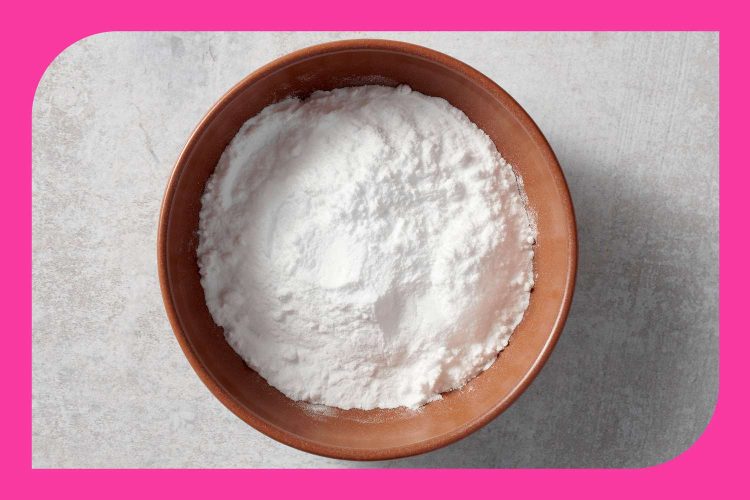Baking Soda vs. Baking Powder: Understanding the Differences and Their Uses in Baking

Though these two leavening agents are frequently confused due to their similar names and purposes, they function quite differently in baking. Understanding how and when to use them is essential for anyone looking to improve their baking skills. In this article, we’ll delve deep into the differences between baking soda and baking powder, their chemical compositions, their roles in baking, and tips on how to use them for optimal results.
What is Baking Soda?
Baking soda, also known as sodium bicarbonate, is a single-ingredient leavening agent that has been used in baking for centuries. It’s a white crystalline powder with an alkaline pH, which means it needs an acid to activate. When baking soda is combined with an acid (like vinegar, lemon juice, buttermilk, or yogurt), it produces carbon dioxide (CO₂) gas. This gas forms bubbles in the dough or batter, causing it to rise and creating a lighter, fluffier texture.
Baking soda is highly effective, but it’s essential to use it correctly. If there isn’t enough acid in the recipe to fully react with the baking soda, it can leave behind a metallic or soapy taste. Additionally, because the reaction begins immediately upon mixing, it’s important to get the batter into the oven quickly to make the most of the rising action.
Chemical Composition and Reactions
Baking soda (NaHCO₃) is a base that needs an acidic ingredient to produce the gas needed for rising. The chemical reaction is straightforward:
NaHCO3+H+→CO2+H2O+Na+\text{NaHCO}_3 + \text{H}^+ \rightarrow \text{CO}_2 + \text{H}_2\text{O} + \text{Na}^+
The key takeaway is that without the presence of an acid, the baking soda will not produce carbon dioxide, meaning your baked goods will not rise as intended. That’s why it’s often paired with ingredients like brown sugar (which contains molasses), buttermilk, or yogurt—these ingredients provide the necessary acidity.
What is Baking Powder?
Baking powder, on the other hand, is a complete leavening agent. It contains both an acid and a base, typically in the form of baking soda and a powdered acid like cream of tartar. Most commercial baking powders are “double-acting,” meaning they work in two stages: once when mixed with liquid and again when exposed to heat. This dual reaction makes baking powder more forgiving than baking soda in terms of timing, as the rising action continues during the baking process.
Baking powder is often used in recipes where there are no acidic ingredients, such as plain cakes, cookies, or biscuits. Because it already contains an acid, it doesn’t require any additional acidic elements to trigger the rising reaction. However, you must measure it carefully. Using too much can cause baked goods to rise too quickly and then collapse, while too little may result in dense, heavy products.
Chemical Composition and Reactions
Baking powder typically contains three components:
- Baking soda (NaHCO₃) – the base
- An acid salt – most often cream of tartar (potassium bitartrate)
- A drying agent – usually cornstarch, which keeps the ingredients stable and prevents premature reactions.
The first reaction occurs when the baking powder is mixed with a liquid, which dissolves the acid and base, allowing them to react and release carbon dioxide. The second reaction occurs when the mixture is heated in the oven, which causes the release of more carbon dioxide, further inflating the baked good.
Here’s the general reaction:
NaHCO3+KHC4H4O6→CO2+H2O+Na++K+\text{NaHCO}_3 + \text{KHC}_4\text{H}_4\text{O}_6 \rightarrow \text{CO}_2 + \text{H}_2\text{O} + \text{Na}^+ + \text{K}^+
Because it contains both an acid and a base, baking powder can work independently, meaning it can leaven baked goods without the need for additional acidic ingredients.
Key Differences Between Baking Soda and Baking Powder
While both baking soda and baking powder serve the purpose of leavening baked goods, they differ in their chemical composition, reactions, and uses. Here’s a breakdown of the most important differences:
1. Composition
- Baking Soda: A pure, alkaline substance (sodium bicarbonate).
- Baking Powder: Contains baking soda (the base), an acid (usually cream of tartar), and a drying agent (cornstarch).
2. Leavening Action
- Baking Soda: Requires an acidic ingredient to trigger a chemical reaction that releases carbon dioxide. This reaction begins as soon as the acid and liquid are mixed with the baking soda.
- Baking Powder: Already contains both acid and base, so it doesn’t require an additional acid to leaven. Double-acting baking powder releases carbon dioxide at two stages—when it is mixed with liquid and again when heated.
3. Speed of Reaction
- Baking Soda: Reacts immediately upon contact with an acid and a liquid, so baked goods must be placed in the oven promptly.
- Baking Powder: Double-acting powder offers more time, as part of the gas is released during mixing, and the rest is released during baking.
4. Taste
- Baking Soda: If too much is used, or if there isn’t enough acid in the recipe, it can leave a bitter or soapy aftertaste.
- Baking Powder: Usually leaves a neutral taste, though using excessive amounts can result in a slightly bitter flavor due to the acidic compounds.
5. Ideal Use
- Baking Soda: Best used in recipes that already contain acidic ingredients (like lemon, vinegar, buttermilk, or molasses).
- Baking Powder: Suitable for recipes that do not include acidic ingredients, as it contains its own acid.
When to Use Baking Soda vs. Baking Powder
Determining whether to use baking soda or baking powder depends on the ingredients in your recipe. Generally, follow these guidelines:
- Use baking soda if the recipe contains an acidic ingredient. For instance, if you’re making chocolate cake, which often includes cocoa powder, or if you’re using yogurt, sour cream, or buttermilk, baking soda will balance the acidity and help the cake rise.
- Use baking powder if there is no acidic ingredient in the recipe. For example, in a basic vanilla cake or sugar cookies, baking powder is necessary because there’s no other source of acid to react with baking soda.
In some recipes, you’ll see both baking soda and baking powder. This usually happens when a recipe includes a small amount of acid for flavor balance, but not enough to activate the required amount of baking soda for proper leavening. In this case, baking powder provides additional leavening power while the baking soda neutralizes the acid.
Conversions and Substitutions
Sometimes you may find yourself without baking soda or baking powder and wonder whether it’s possible to substitute one for the other. The short answer is yes, but with limitations.
- Substituting Baking Powder for Baking Soda: If a recipe calls for baking soda and you only have baking powder, you’ll need to use about three times as much baking powder to achieve the same leavening effect. This is because baking powder contains both an acid and a base, while baking soda is purely a base. However, this substitution may slightly alter the taste and texture of your baked goods due to the added acid.
- Substituting Baking Soda for Baking Powder: If you only have baking soda and the recipe calls for baking powder, you can’t directly substitute it without adding an acidic ingredient. For each teaspoon of baking powder, substitute with ¼ teaspoon of baking soda plus ½ teaspoon of vinegar, lemon juice, or another acid. Be mindful that this substitution can change the flavor profile of the final product.
Common Mistakes and How to Avoid Them
Even seasoned bakers sometimes make mistakes when working with leavening agents. Here are some common pitfalls and how to avoid them:
- Using too much baking soda: Adding too much baking soda can cause a strong metallic or soapy taste in your baked goods. Always measure carefully and stick to the recipe’s guidelines.
- Adding baking soda without an acid: If you add baking soda to a recipe without an acid, your baked goods won’t rise properly, and you may end up with a dense, flat result.
- Using expired baking powder: Baking powder loses its potency over time. Be sure to check the expiration date before using it. If in doubt, you can test its effectiveness by placing a teaspoon of baking powder in hot water; if it bubbles immediately, it’s still active.
- Mixing too much after adding baking powder: Overmixing can knock out the gas that baking powder has released, resulting in dense baked goods. Mix only until the ingredients are combined.
Conclusion
Both baking soda and baking powder play critical roles in baking, but they serve different functions based on the chemical reactions they undergo. Baking soda is ideal for recipes that contain acidic ingredients, while baking powder is better suited for those that do not. Knowing when to use each, how they work, and what to avoid can significantly improve your baking outcomes.





